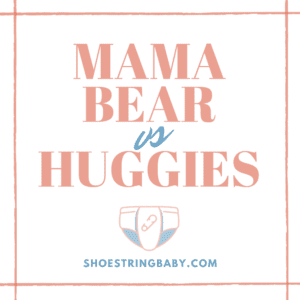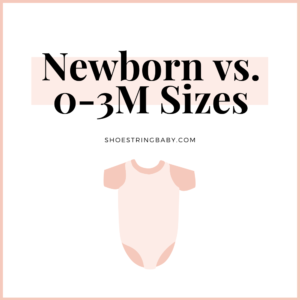How to Buy Used Cloth Diapers [2023 Guide]
This post may contains affiliate links. As an Amazon Associate, I earn from qualifying purchases. Read the full disclosure here.
Have you heard the claim that cloth diapers will save you thousands of dollars compared to using disposables on your baby? This idea was one of the main reasons clothes diapers piqued my interest during pregnancy. I also was very much into the purported environmental benefits as I worry a lot about how each disposable diaper we use will never decompose.
Unfortunately, those claims are more dubious than they seem. Whether cloth diapers are better for the environment is debated, given their cotton and water usage. And while cloth diapers save you money in the end compared to name-brand disposables, the savings aren’t as stark if you compare the cost of cloth diapers to store-brand disposables.
That is, unless you buy your cloth diapers used. Buying secondhand cloth diapers is more environmentally-friendly than buying new and can be much cheaper. Used cloth diapers are a great option for those wishing to minimize their baby’s environmental and financial footprint.
Buying cloth diapers secondhand is also easier than it sounds. The market for secondhand cloth diapers is active. There is some trial and error with finding the best cloth diapers for your baby, which means there are a lot of people selling lightly used and even new cloth diapers with good discounts off retail. While using someone else’s diapers may sound icky, you can easily clean and sterilize used cloth diapers at home.
Below is a guide to everything you need to know to get started buying used cloth diapers.
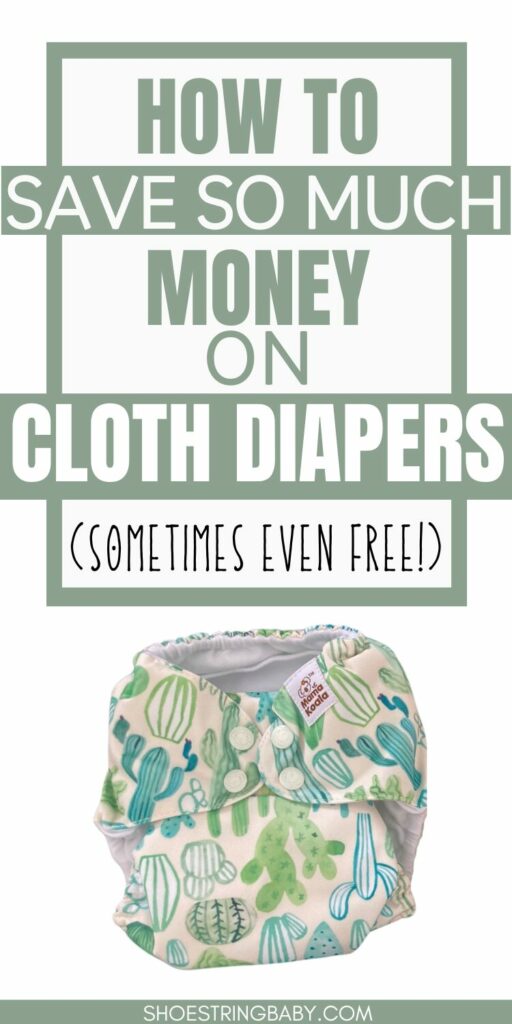
Used Cloth Diaper Terminology and Abbreviations
Getting started in cloth diapering can feel a bit like learning a new language, with lots of terms and abbreviations. First, there are different types of cloth diapering systems. Here is a rundown:
Cloth Diaper Types
- All-in-One diapers (AIO): This is a complete diaper, where the absorbent inserts are sewed in the diaper cover. They most emulate a disposable in terms of work but are slower to dry and usually more expensive.
- All-in-Two diapers (AI2): All in twos include snaps for adhering an absorbent, removable insert (sometimes called a soaker). They are supposed to have the same convenience of being one piece like an All-in-One, with the benefit of faster drying and flexibility to change soaker type.
- Covers: Covers are the waterproof outer layer diaper shell that do not have absorbent materials. You place inserts, folded flat diapers, prefolds or fitted diapers inside for absorbency (more on those below).
- Pockets: Pockets have a pocket between the waterproof shell and a fleece inner layer that is in contact with the baby’s skin. In this pocket you stuff inserts or flat diapers to add absorbency. It takes the extra step of stuffing the diapers, but once stuffed they also go on like a disposable diaper (these are my favorite).
Each cloth diaper type needs absorbent material in it to soak up baby pee. All-in-Ones have the absorbent material already sewed in. The other types allow you to pick and choose the absorbent materials that work best for you. Here are the most common types:
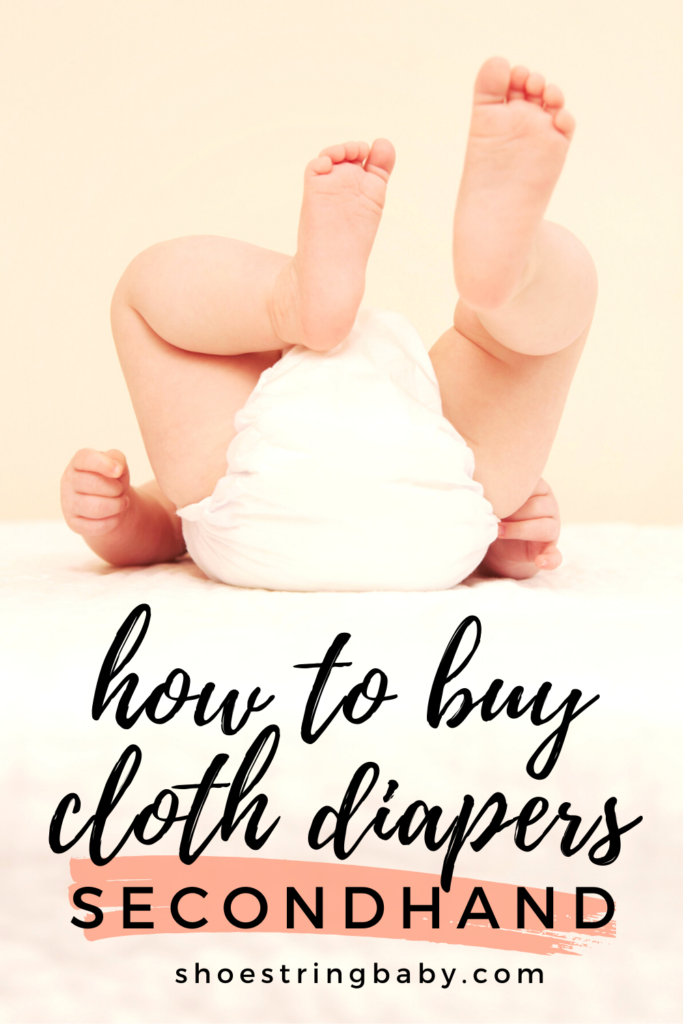
Cloth Diaper Absorbent Materials
- Fitted diapers: These are diapers made of absorbent material but are not waterproof. They look like regular diapers and are used in conjunction with covers.
- Flat diapers: Flat diapers are large squares of absorbent fabric. They can either be folded up and placed inside of covers or pockets, or wrapped around the baby and adhered with clips called snappies.
- Inserts: Inserts are essentially pieces of absorbent fabric that you place inside the diaper that soak up urine. They are usually the least bulky of the absorbent options. There are different kinds of inserts with their own strengths and weaknesses:
- Bamboo: Bamboo inserts are thinner and quick absorbing, but more expensive.
- Cotton: Cotton is an affordable option but is slower absorbing.
- Hemp: Hemp can absorb a lot of fluid but is slow absorbing. These are popular but more expensive since they do not wear out with time.
- Microfiber: Microfiber are fast absorbing but act like a sponge so they are prone to pressure leaks. They’re cheap and come standard with a lot of cloth diapers. However, they wear quickly compared to other inserts so they’re less popular.
- Prefolds: Prefolds are in the middle ground between flats and inserts, they are flats that have been somewhat sewn together but are bigger than inserts.
Lastly, there are some cloth diaper accessory terms which you may come across:
Miscellaneous Cloth Diaper Terms & Accessories
- Hook & Loop: Hook and loop is a fancy way of saying that the diaper fastens with velcro instead of snaps. Velcro cloth diapers are thought to have a shorter shelf life than snaps.
- Liners: Liners are a thin disposable liner that so you can peel off and flush away with poop instead of trying to get it off the diaper itself.
- PUL: Polyurethane laminate is the durable material that makes up the waterproof outer layer of diaper covers.
- Snappies: Snappies are clips that hold flat diapers in place on the baby
- Wet bag: Wet bags are waterproof bag for storing dirty diapers until you can put them in the washing machine. Wet bags are great even if you don’t use cloth diapers for gross or wet baby clothes. (They’re on my list of affordable useful baby gifts)
When you’re ready to start buying secondhand cloth diapers, you’ll also find a lot of abbreviations related to selling and diaper condition. Here is a quick guide of the most common secondhand resale lingo:
Abbreviations for Buying Used Cloth Diapers
- EUC: Excellent used condition
- Firm: Seller is not open to price negotiations
- FS: For sale
- FT: For trade
- ISO: In search of
- MMAO: Make me an offer
- NIP: New in package
- NOOP: New out of package
- NWOT: New without tags
- NWT: New with tags
- OBO: Or best offer
- OS: One size (diaper)
- PPD: Price includes shipping costs
- UC: Used condition
- VGUC: Very good used condition
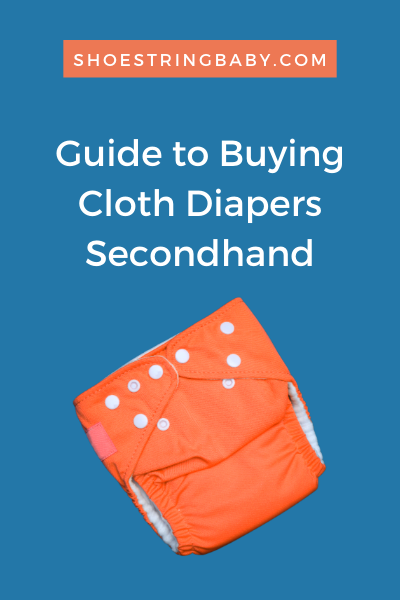
Things to Watch Out For in Secondhand Cloth Diapers
There are some important things you should be aware of before buying your first secondhand cloth diaper. I flubbed my first used cloth diaper purchase by buying microfiber inserts that were worn out. Luckily it only cost me a few bucks but if you buy a big lot of used cloth diapers, it could be a more costly mistake.
Here are some things to consider before making a purchase:
How Many Used Cloth Diapers Should You Buy?
The number of cloth diapers you’ll need depends a lot on the age of your baby, how often you do laundry, and if you are part-time or full-time cloth diapering.
Newborns require the most diaper changes. Since they are smaller, they also require newborn-sized cloth diapers. As new babies will only be in newborn-size cloth diapers for a few months at most, some people opt to use disposables initially instead of buying a bunch of newborn sized diapers that they’ll only use briefly. If you do want to cloth during the newborn days, be prepared for around 12 diaper changes in a day.
For older infants and toddlers, you’ll change diapers less. You’ll often read that 24 cloth diapers are enough to do full-time cloth diapering and laundry every 2-3 days. Again though, this is very individual. I use cloth diapers part-time (disposables at night and out of the house) and haven’t had trouble getting by with far fewer than 24 diapers. However, having fewer diapers means they’ll see more use and wear out faster.
All that said, if you are at all unsure about cloth diapering, you may want to start with just a few diapers to try it out. I started mixing in cloth diapers around 3 months old to see how we liked it before investing in more diapers or gear. Even now, we only have about 10 cloth diapers in rotation and I comfortably do laundry only every of couple days.
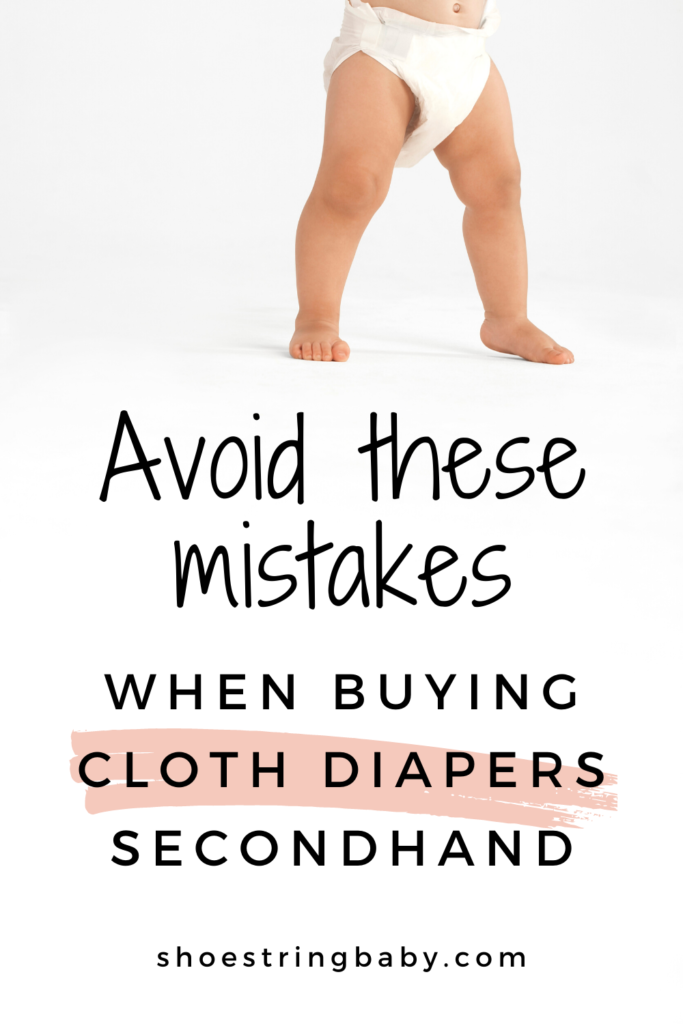
Variety of Cloth Diaper Brands
Here’s the deal, there is no shortage of review sites listing the best cloth diapers on the market. I don’t doubt that some cloth diapers are better quality than others, but from my experience a good fit for your baby’s body matters more.
I personally reach for a “cheap” brand of diaper that doesn’t rank on those best lists far more than my “nicer” brand diapers (check out my review of my Mama Koala vs. Alva Baby diapers for more on why I like my budget diapers).
My long and skinny baby doesn’t fit in the nicer brand as well so they leak regularly. The match between diaper brand and baby body shape can be a deal breaker for some families.
With that in mind, I would be hesitant to buy a big lot of the same brand. Babies grow and their sizing diaper fit may also change over time. You may also find you like a different type of diapering system than you expected. I thought I’d like All-in-Ones for the simplicity but pockets turned out to be my favorite. Other people hate pockets! You don’t know until you try.
Elastic Condition
Now let’s get into the quality of the pre-owned cloth diaper. There are a few key things you’ll want to look for before buying. First on the list in the elastic quality. Elastic does not last forever and will lose it’s stretchiness with time and use. Stretched out elastic increases the chance of leaks because the diaper will be too loose.
If you’re like me and don’t know how to sew, replacing elastics can be a costly undertaking depending on the diaper brand. I leave relaxed elastic cloth diapers for people with more DIY skill to revive.
The one brand of diapers I’d consider buying with bad elastics is FuzziBunz, since their elastics are not sewed in and are easier to replace. I appreciate their focus on extending the life of their diapers with this design choice. On the other hand, BumGenius diapers have a reputation of losing elasticity more quickly than other diapers.
PUL (Polyurethane Laminate) Condition
Second, you’ll want to look at the condition of the cover. PUL is a very durable material and stands up well to repeated use. However, you’ll occasionally see diapers for sale with cracks in the PUL.
The PUL covering is what keeps the liquid inside the diaper. Cracks will increase your chance of leaks. PUL cannot be easily repaired so it is best to pass on these diapers. To check the PUL, make sure you turn the diaper shell inside out if it is a pocket and inspect the inside carefully.
The only time I’d consider testing out a used cloth diaper with any PUL wear is if the diaper is free. If you are unsure of the PUL condition, you can pour a small amount of water on it to test how it holds liquid before using it on your baby.
Skip Microfiber Inserts
I’ve seen warnings against buying microfiber inserts secondhand on multiple forums. The thought is that microfiber inserts wear out and lose their absorbency over time, some after only a year of use.
I tried to find some kind of research to back this up but did not have much luck. I bought secondhand microfiber inserts once and they were only okay. While I couldn’t find the formal data, I no longer buy microfiber inserts since it is easy enough to opt for a different insert material instead.
Due to the nature of the microfiber material, they are known to hold smell more than other types of inserts. Some people report having to strip their microfiber inserts more often to keep them from stinking (stripping involves soaking in hot water with borax and washing soda, more on that below).
Microfiber inserts are also the cheapest inserts so it is affordable to buy them new if you’d like to use them.
Stains, Smells and Laundry Soap Build Up
Don’t be deterred by stains and smells on diapers. These shouldn’t impact function, and normal smells and stains should be easy enough to remove.
When you get a lot of used cloth diapers, you’ll likely want to strip them. I go more into this cleaning process below but essentially stripping deep cleans the used cloth diapers and removes any mineral or soap build up that may impact absorbency. Stripping should also take care of any smells.
For stains, diapers can be put out in the sun to bleach the stains.
Don’t Overpay for Pre-Owned Cloth Diapers
Before diving into where to purchase secondhand cloth diapers, let’s talk about price. The range of prices for new cloth diapers is fairly wide. Some of the more touted brands have diapers that cost upwards of $35 each. On the other hand, you can find cheap diapers from China with great reviews for about ~$6 a diaper new.
Related Post: Do Cloth Diapers Save Money?
Before I buy a cloth diaper, I think of how many times I’d have to use it to break even compared to the cost of disposables. If you are only planning to cloth diaper one kid, it may be harder to break even on more expensive diapers.
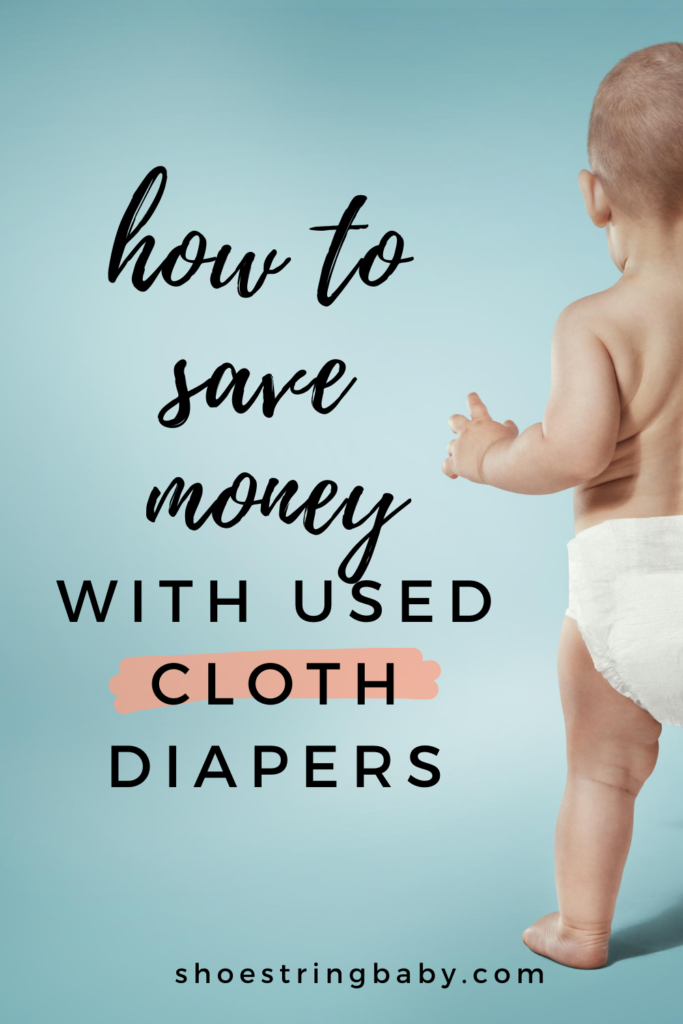
Since there are new cloth diaper options that are in the $5-6 dollar range, I use this as a guide when buying used cloth diapers. As a general rule, I’d aim for at least a 50% discount off buying retail when buying a secondhand cloth diaper.
Always look up how much your cloth diaper brand sells new. Don’t assume just because the cloth diaper is secondhand that it is a good deal. Some people in the cloth diapering community get really into patterns. Because of that, you’ll see used cloth diapers selling for more than you could buy it new.
Where to Buy Secondhand Cloth Diapers
There are a lot of options for buying pre-owned cloth diapers, including in-person and online options. Facebook groups and Facebook Marketplace are the first stop for most people dealing in used cloth diapers. Here is a list of options:
In-person
Buying used cloth diapers in person is nice because you can physically inspect the diapers before making a purchase.
- Swap Events: Many areas have swap meet up events for baby and kids items. These can be a great place to find used cloth diapers.
- Consignment Stores: Child consignment stores like Once Upon a Child may carry cloth diapers and cloth diaper accessories.
- Yard Sales: Of the in-person options, yard sales require the most effort to find cloth diapers but offer the biggest opportunity for finding a great deal. These days, many people post about their yard sales on Facebook Marketplace so check out those posts to save yourself the drive first. Some yard sale sellers will respond to questions about what they’re selling through Facebook messages before the sale.
Facebook is my first stop when looking for used cloth diapers. People post used cloth diapers to both the general Marketplace and to sale groups.
- Marketplace: Facebook Marketplace can have some good deals on cloth diapers but takes a bit more searching. I’ve found that some people who aren’t as connected to the local cloth diaper community will post only to Marketplace and they often offer better deals because they want to get rid of their diapers fast.
- Local Cloth Diaper Groups: Local cloth diaper groups are the sweet spot for buying pre-owned cloth diapers. The posting are very specific and more frequent than more general yard sale groups. Local groups are also much cheaper because you don’t have to pay for shipping and you can inspect the diapers before paying.
- Local Parents Groups: Some local parents Facebook groups allow for sale postings. These are also great but may not have cloth diaper postings as frequently. I have gotten most of my used cloth diapers through a parents Facebook group instead of a cloth diaper-specific group.
- Local Yard Sale Groups: These general yard sale groups will occasionally have cloth diaper postings and are good to keep an eye on. Like the Marketplace postings, these may be better deals or have less competition than more baby- or diaper-focused groups.
- National Buy/Sell/Trade Groups: National cloth diaper Facebook resale groups are large and very active. For example, Cloth Diaper Destash has almost 17,000 members and can have over 100 posts a day. However, many people list their pre-owned cloth diapers for higher than retail and there are shipping costs. It seems like you have to time it really well or be stalking the group to get a good deal because they are snatched up so quickly.
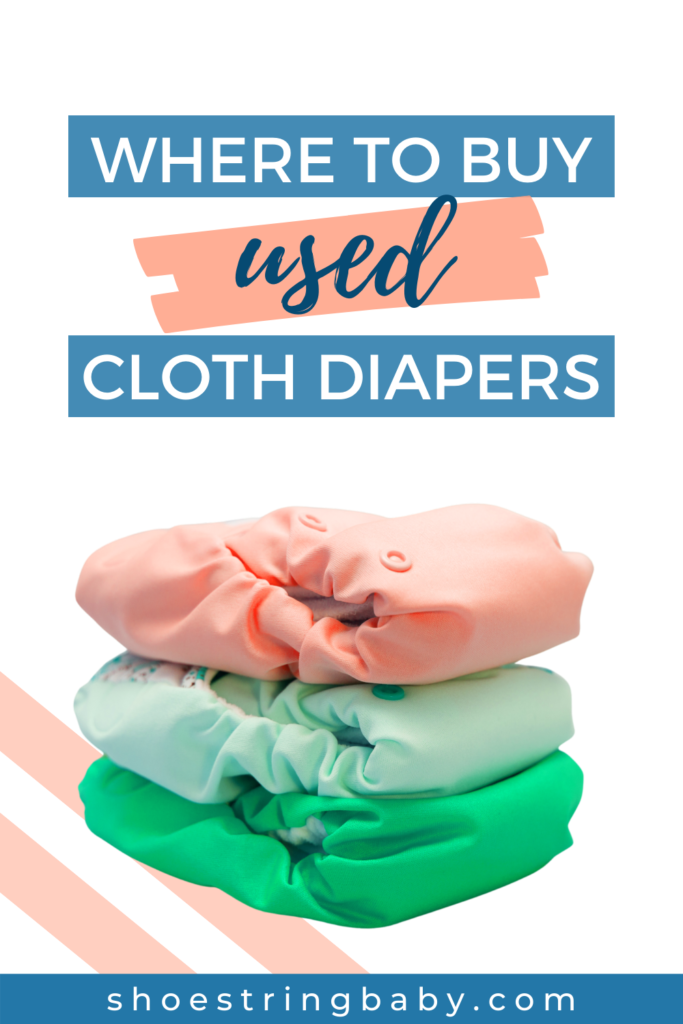
Online
Facebook isn’t the only online option, here are some other places to find pre-owned cloth diapers online.
- Craigslist: Craigslist is the old standby for finding secondhand goods locally. There are not as many cloth diaper posts but with all things Craigslist, there’s always the chance of finding a steal. Craigslist also allows you to inspect the diapers in person since you’ll be buying locally.
- Ebay: When I was writing this post, there was over 14,000 hits for “cloth diapers” on Ebay. There can be good deals found on Ebay but you’ll have to sort through some diapers priced above retail.
- Jillian’s Drawer: Jillian’s Drawer offers a trial cloth diaper program where you can try a sampler of cloth diapers for 21-days. Trial diapers that are returned are then sold as gently pre-owned diapers. These used diapers are more expensive but likely have very little wear. They also inspect the condition of the used cloth diapers before selling them.
- OfferUp: OfferUp is another Craigslist competitor in the local market. It differentiates itself by allowing ratings and phone verification of users
- Mercari: Mercari is an online platform to connect sellers and buyers. They have tons of cloth diaper listings but you’ll have to sift through them to find good deals, especially when you consider shipping.
- Poshmark: Like Mercari, Poshmark is an online site connecting individuals selling items with buyers. Like other seller-to-buyer sites, Poshmark’s cloth diaper inventory is constantly changing and deals will vary.
How to Clean and Sterilize Used Cloth Diapers
There is one more step after you buy your first lot of used cloth diapers – cleaning and sanitizing! Cleaning protocols for cloth diapers can seem overwhelming before you get started because everyone has a different opinion on best practices.
Let me say, it is not bad once you get going. Most of the time I wash our cloth diapers like our regular laundry (often times with our laundry! I simply do a good hand rinse in the sink first).
Related Post: How Much Does It Cost to Wash Cloth Diapers?
However, the first washing of used cloth diapers is a little more involved. First you need to “strip” the diapers to remove laundry soap and mineral build up. Then you’ll sterilize the diaper to kill off anything left after stripping.
Stripping Pre-Owned Cloth Diapers
Stripping is a cleaning process to deep clean pretty much any laundry that may have gotten dingy over time with residual detergent, hard water build up, etc. With used cloth diapers, you want to remove this build up as it can negatively impact a cloth diaper’s absorbency.
My introduction to stripping laundry actually came via Instagram. People were posting their tubs full of dark, dirty water after the their laundry stripping experiments, and it was grossly satisfying.
I personally follow @gocleanco’s stripping recipe. In my top loaded washing machine (or tub), I soak my laundry or cloth diapers in hot water with 1/4 cup of borax and 1/4 cup washing soda (or baking soda). If available, you’ll also want to add 1/4 cup of calgon which is a water softener.
@gocleanco recommends including powdered Tide but I skip this step for used cloth diapers since you’re trying to remove laundry soap build up. After the soak, complete the washing machine wash as normal.
Occasionally, you may have to repeat the stripping process or run a couple rinse cycles to remove all the laundry detergent build up.
Sterilizing Sterilizing Pre-Owned Cloth Diapers
After you’ve stripped and washed the diapers, you’ll want to bleach the diapers to sterilize them. PUL color should not fade with bleaching.
One simple option is running a cold wash cycle with bleach. The bleach needs to be standard bleach (as opposed to color-safe, scented etc. types). You’ll want to pause the wash cycle for about 30 minutes to allow the used cloth diapers to soak. Alternatively, you can soak the diapers in cold water with bleach in a bowl or sink for 30 minutes.
Make sure that you dilute your bleach based on the water amount since it can be harsh on fibers. There isn’t a standard recommended dilution. I’d use a 1/4 cup in a wash cycle or in a half filled tub but you’ll see different ratios depending on your reference.
Summary
I hope that this guide will help you save money and find great deals on secondhand cloth diapers. Here are some key take aways to remember:
- Just because it is used doesn’t mean it is a good deal. Always compare the price to buying new.
- Double check elastics and PUL condition before buying.
- Used cloth diapers need to be sanitized, which is easily done with a quick diluted bleach soak.
Cloth diapering involves some trial and error. The cloth diapering subreddit is a great place to go to get individual troubleshooting and advice.
What has been your best secondhand cloth diaper score? What tips do you have for someone getting started with cloth diapering?
Like this post? Pin it!
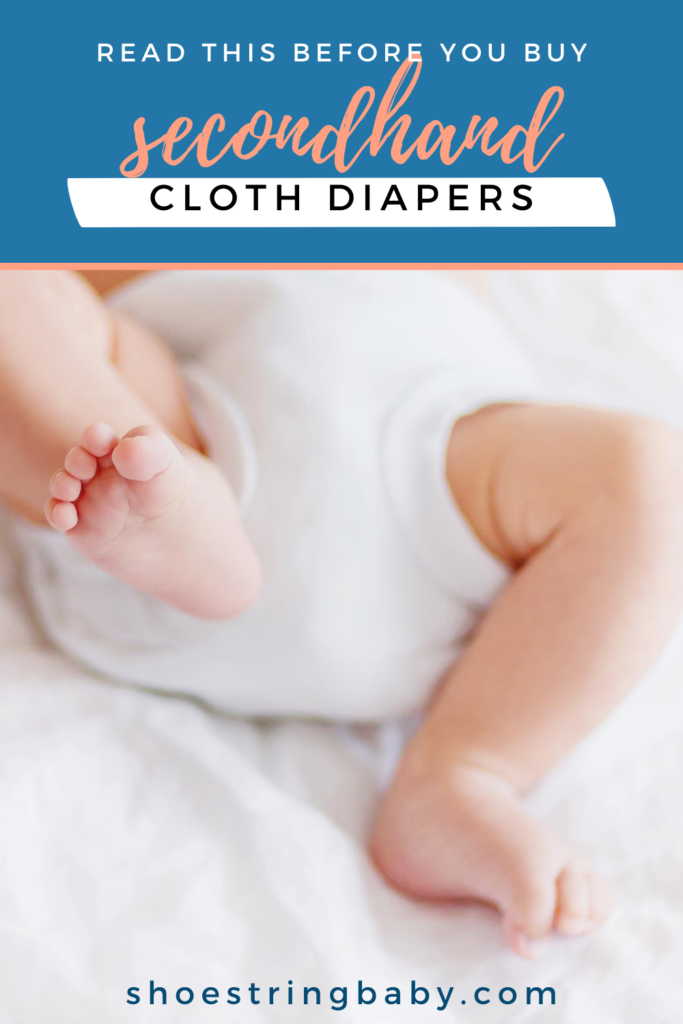

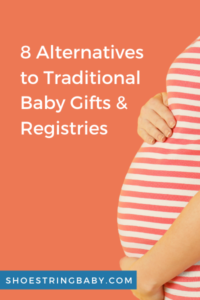
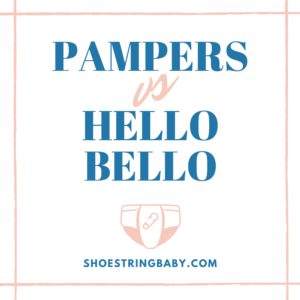

![Sit-Me-Up Seat vs. UpSeat [2023 Baby Floor Chairs]](https://shoestringbaby.com/wp-content/uploads/2022/06/sit-me-up-vs-upseat-200x300.png)
